Hello people of the Internet, I have an Interferogramm (time domain) and want to to Fourier transform it into a IR Spectrum (frequency domain) to obtain the peaks of the functional groups in the molecule. FTIR (Fourier Transformation Infrared Spectroscopy) is a advanced method to determine functional groups in a molecule. The so-called interferometer is build like this:

An interferogram plots the signal intensity in Volt vs. the mirror position in nanometers, as in this script:
par(family="mono", font.axis=1)
data <- read.table("D13-4-aminobenzoic_acid_interferogram.asc")
x <- data[,1]
y <- data[,2]
plot(x,y,
type="l",
xlab="Mirror position [mm]",
ylab="Signal intensity [V]",
axes=F,
)
axis(1)
axis(2)
Here is the Link to the .asc file with the measured data. After the Fourier Transformation the spectrum should look like this:

My question is: How do I make a fast discrete Fourier transformation in R using fft() from the Interferogram to the IR spectrum? Is the reverse transformation from the spectrum to the Interferogram possible in R and if yes how is it done.
Cheers,
Kris